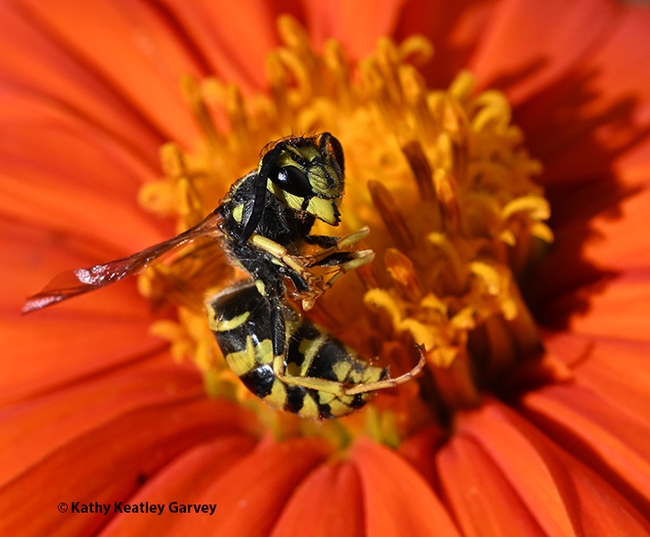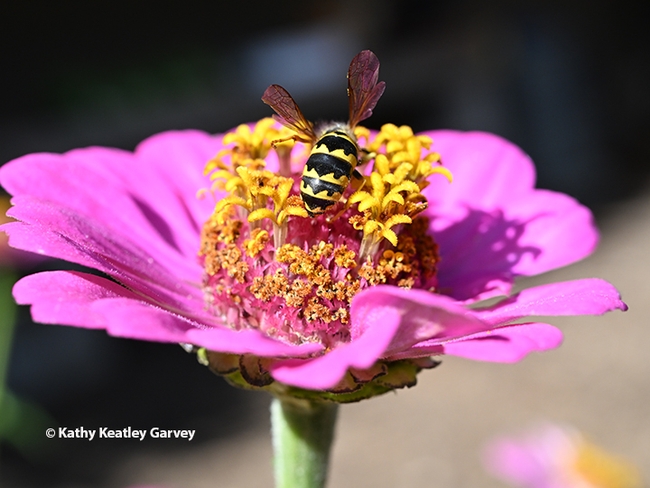It's been several months since I've seen a Western yellowjacket, Vespula pensylvanica.
But there it was, dead. It had drowned in an outdoor water bowl.
Easy pickings, you say?
Easy photography! It's a beautiful insect with its black and yellow coloration.
I've seen yellowjackets preying on caterpillars, sipping a sugary soda at an outdoor restaurant, and trying to share a hamburger at a picnic. They can be major pests.
But they're also predators that do good, such as preying on soft-bodied insects that can damage agricultural crops. And they're pollinators.
Yellowjackets are often called "meat" bees, according to a fact sheet written by UC Davis distinguished professor emerita Lynn Kimsey, who retired Feb. 1 as the 34-year director of the Bohart Museum of Entomology (but continues her work as a researcher and as the executive director of the Bohart Museum Society and writer-editor-publisher of the Bohart newsletter). You can see Kimsey's Fact Sheets about insects and arachnids posted on the Bohart Museum website.
Of the yellowjackets, Kimsey says that they are social wasps that build large hidden nests, "usually subterranean in rodent burrows or in cavities in trees, walls, or attics..." The nests "can be huge with 50,000 to 100,000 workers. In temperate climates these colonies are annual. Their nests die in the fall after producing new queens. New queens produced by the colonies in the fall spend the winter in protected places until spring when they found new colonies." (See more on her Fact Sheet)
This one managed to meet its demise yesterday in a cat's water bowl. The cat was not around.
Attached Images:

